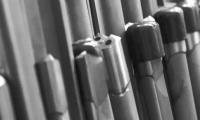 Add My Company
Add My Company
Sign In

Producing blind bores into precision machined components, and responsibly quoting for them, should always result in more questions for the customer. As much as time is short during our busy working days, and these queries often result in a little lost time, it’s always worth investigating at the design stage whether the form required suits the process needed to produce it or will require a non-standard tool.
Designers are often quick to add a “shoulder” type form at the bottom of the bore, referred to as a “flat bottom” but there is rarely a true requirement for this and the consequences can impact the competitiveness of the quotation both in terms of cost and lead time.
Deep hole drilling and deep hole boring to a depth creates what is referred to as a “w form” as standard. In some cases, another bore will be breaking through into the initial blind bore causing most of the w form to be lost and leaving a step either side. However, when there is a single-blind bore, it is unusual for the w form to really make a positive impact to the design unless a mating part or seal is going within the bore which needs to fit or hit onto a straight surface. There are of course legitimate reasons for the requirement of specially formed bores, sometimes for strength or lightness, and other applications we’ve mentioned, but it is worth noting that most forms can be produced but at a detrimental effect to the cost and lead time.
For more information on A PERFECTLY FORMED BOTTOM – DOES YOUR BORE REALLY NEED A FLAT BOTTOM? talk to Hone-All Precision Ltd
Enquire Now
More News
List your company on FindTheNeedle.

